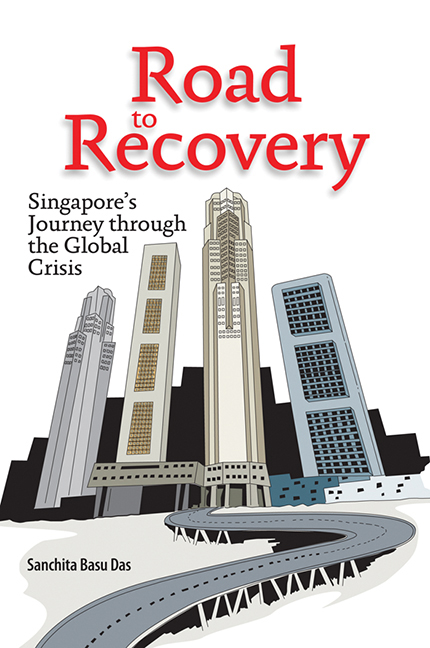Book contents
- Frontmatter
- Dedication
- Contents
- List of Tables
- List of Figures
- List of Boxes
- Foreword
- Acknowledgements
- Abbreviations
- 1 Introduction
- 2 Global Financial and Economic Crisis: Causes, Impact, and Policy Response
- 3 Impact of Global Economic Crisis on Singapore
- 4 Singapore's Policy Responses to the Global Economic Crisis
- 5 Singapore Economic Perspective and Future Policy Directions
- 6 Lessons Learnt
- Appendix I MAS Monetary Policy Statements
- Appendix II Key Budget FY2009 Initiatives
- Appendix III Summary of the ESC Key Recommendations
- Appendix IV Key Budget FY2010 Initiatives
- References
- Index
- About the Author
Appendix I - MAS Monetary Policy Statements
Published online by Cambridge University Press: 21 October 2015
- Frontmatter
- Dedication
- Contents
- List of Tables
- List of Figures
- List of Boxes
- Foreword
- Acknowledgements
- Abbreviations
- 1 Introduction
- 2 Global Financial and Economic Crisis: Causes, Impact, and Policy Response
- 3 Impact of Global Economic Crisis on Singapore
- 4 Singapore's Policy Responses to the Global Economic Crisis
- 5 Singapore Economic Perspective and Future Policy Directions
- 6 Lessons Learnt
- Appendix I MAS Monetary Policy Statements
- Appendix II Key Budget FY2009 Initiatives
- Appendix III Summary of the ESC Key Recommendations
- Appendix IV Key Budget FY2010 Initiatives
- References
- Index
- About the Author
Summary
Date: 12 October 2009
Introduction
1. In April 2009, MAS re-centred the exchange rate policy band downwards to the prevailing level of the SG$NEER, while maintaining the zero per cent appreciation path which was adopted in October 2008. This decision was made against the backdrop of dissipating inflationary pressures and weak growth prospects for the Singapore economy in the midst of the global financial crisis.
2. Since the last policy review, the S$NEER (Figure 1) has fluctuated in the upper half of the policy band. This reflected the broad-based weakness in the US$ since the end of the first quarter, as well as strong capital inflows to the region. The domestic three-month interbank rate has remained at 0.69 per cent over the past six months, amidst low global interest rates.
Outlook for 2009 and 2010
3. Following the sharp contractions in Q4-2008 and Q1-2009, the Singapore economy rebounded strongly by 22 per cent on a quarter-on-quarter seasonally adjusted annualised (q-o-q SAAR) basis in Q2-2009. The easing of global financial conditions and inventory restocking had benefited the domestic financial market and manufacturing activity. According to the Advance Estimates released by the Ministry of Trade and Industry today, Singapore's GDP expanded by a further 14.9 per cent q-o-q SAAR in Q3-2009, with a broad range of industries across both the manufacturing and services sectors registering positive growth. Reflecting the better-than-expected outcome, Singapore's GDP growth forecast for 2009 has been revised upwards to between –2.5 per cent and –2 per cent, from –6 per cent to –4 per cent.
4. Looking ahead, the economy is not expected to sustain the strong pace of expansion seen in Q2- Q3-2009. While prospects for the external economies have improved, final demand in Singapore's key export markets, including for IT products, has yet to recover decisively. Significant challenges remain in the transition to private sector–driven growth as governments prepare to exit from their expansionary policies. Household spending, particularly in the US, continues to be constrained by the weak labour market, sluggish income growth, and lower housing wealth. Businesses also remain cautious in their investment decisions.
- Type
- Chapter
- Information
- Road to RecoverySingapore's Journey through the Global Crisis, pp. 137 - 149Publisher: ISEAS–Yusof Ishak InstitutePrint publication year: 2010



